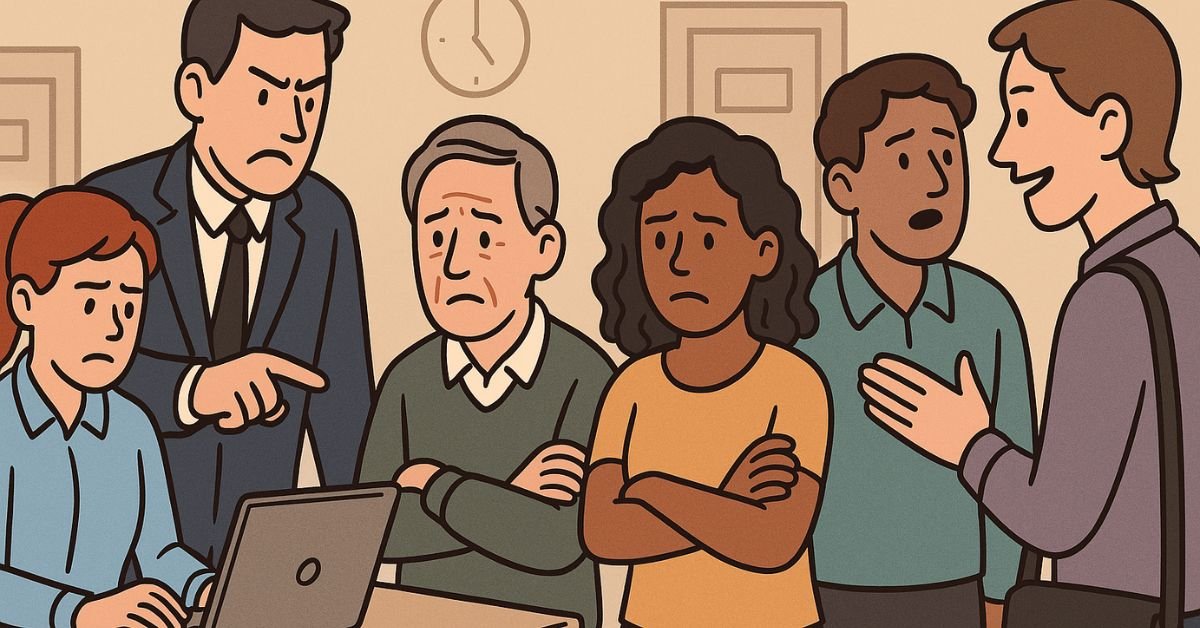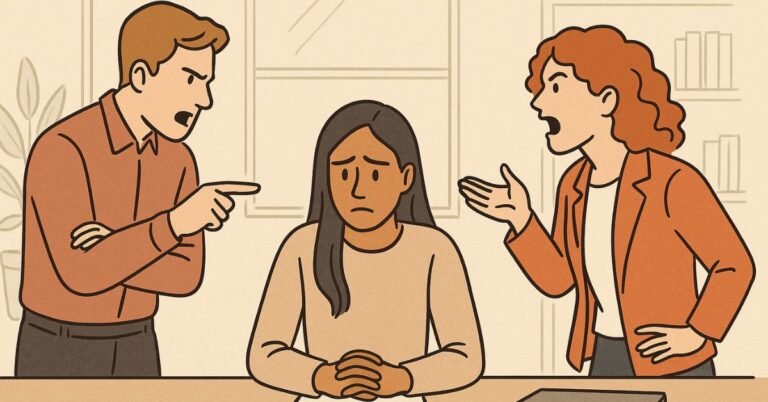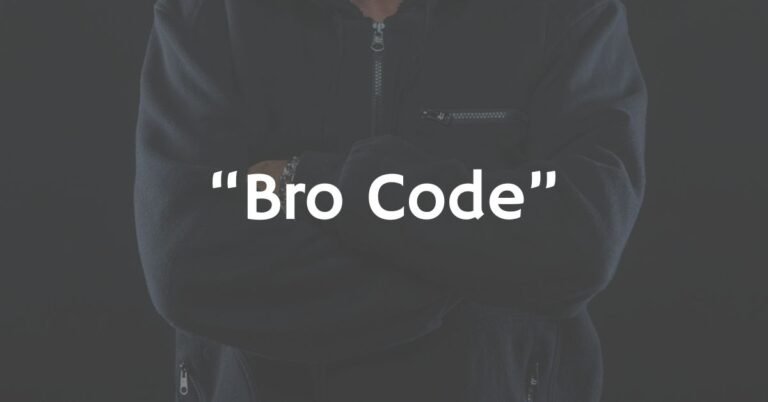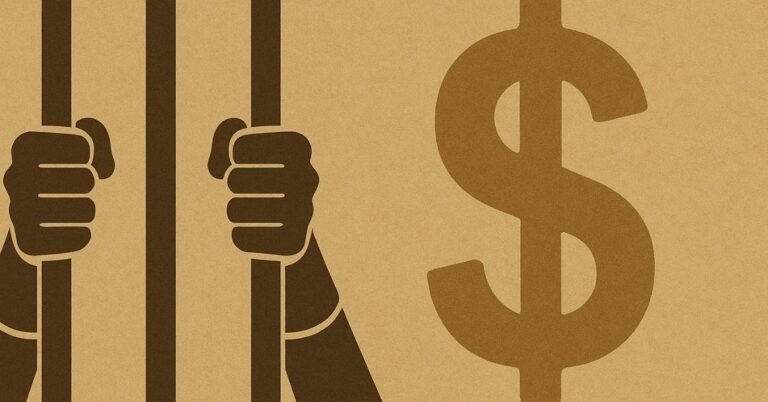Workplace Discrimination: Types, Examples & How to Take Action
Workplace discrimination refers to unfair or unequal treatment of employees or job applicants based on personal characteristics that are not related to their job performance or qualifications. In other words, it happens when someone is treated worse at work simply because of who they are rather than how well they do their job. This can create a work environment where certain people are favored and others are disadvantaged or harassed. Not only is this behavior wrong, but it is also against the law. All employees deserve to work in an environment where they are respected and evaluated fairly. Below, we outline common types of workplace discrimination, explain what they mean in plain language, and provide real-world examples. We also discuss subtle forms of bias, what you can do if you experience discrimination, and a special message for women and pregnant workers.
Gender Discrimination
Gender discrimination (also known as sex discrimination) occurs when someone is treated differently or unfairly at work because of their gender. This type of discrimination often affects women, but it can affect people of any gender. It can take many forms, such as paying one gender less for the same work, denying promotions or opportunities to employees of a certain gender, or assigning tasks based on gender stereotypes. For example, an employer might assume a woman is less dedicated to her career because she has children, or assume a man shouldn’t do jobs that require empathy or care. Gender discrimination creates an unequal playing field and is prohibited in the workplace.
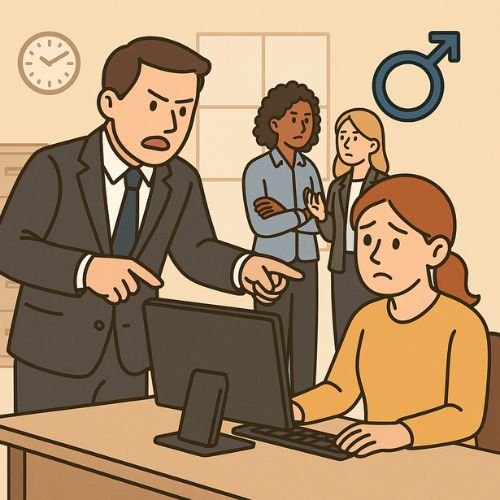
Example of gender discrimination at the workplace
For instance, imagine a qualified female employee who consistently receives strong performance reviews. When a management position opens up, she applies, but the promotion is given to a less experienced male colleague. The unofficial reason given is that the bosses feel “clients prefer dealing with a man” in that role. This is a clear example of gender discrimination: the woman was passed over solely because of her gender, not because of her ability or performance.
Racial Discrimination
Racial discrimination happens when an employee or job candidate is treated unfavorably because of their race or ethnicity. This means making decisions or comments based on stereotypes or biases about someone’s racial background. Racial discrimination can be very direct, such as using racial slurs, or it can be more subtle, like always favoring employees of one race for promotions or mentoring. It might show up in hiring (not interviewing qualified candidates of a certain race), in daily interactions (offensive “jokes” or excluding someone), or in how opportunities are distributed at work. Treating someone poorly or holding them back on the job because of race creates a hostile environment and is illegal under federal employment laws.
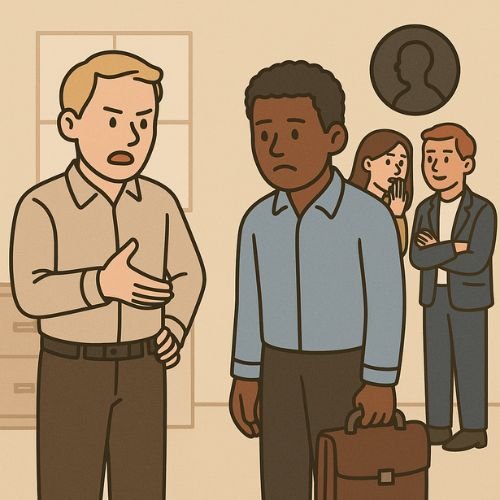
Real-world example of racial discrimination at the workplace
For example, consider an employee of color who regularly hears coworkers make offensive jokes or remarks about their race. These comments might be phrased as “just kidding,” but they make the employee feel unwelcome and insulted every day. If the employee reports the behavior to a manager and it’s brushed off or continues, that employee is experiencing racial discrimination through a hostile work atmosphere. In another scenario, a highly qualified Black job applicant might notice they keep getting rejected without explanation, while less qualified candidates of a different race are hired. In both cases, the individuals are being treated unfairly because of race, which is unacceptable in the workplace.
Age Discrimination
Age discrimination involves unfair treatment of someone because of their age. In the workplace, this often refers to bias against older employees. An older worker might be overlooked for a new job or promotion due to assumptions that they are less energetic, less adaptable, or too close to retirement. However, age-based bias can also affect younger workers—such as being dismissed or not taken seriously just because of a younger age, even when they are competent. Common misconceptions include believing that older employees can’t learn new technology or that younger employees are irresponsible. Any decision based on these age stereotypes, rather than on actual skills or performance, is age discrimination. People should be judged on their abilities and contributions, not on how old or young they are.
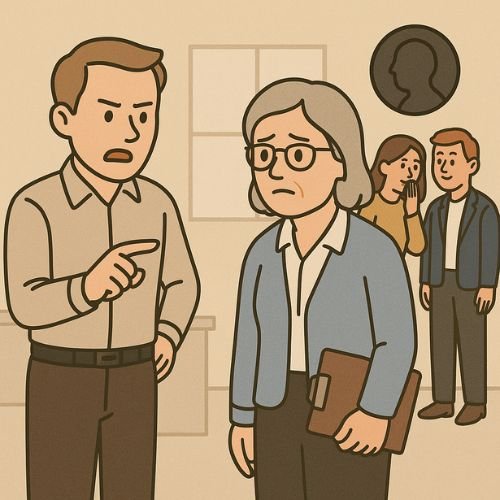
Example of age discrimination at the workplace
Imagine a skilled software developer in her late 50s who has kept her skills up-to-date and consistently delivers quality work. A high-profile project involving a new technology comes up, and she is eager to lead it. However, her manager assigns the project to a younger, less experienced developer, assuming the older employee might not “get” the latest technology purely because of her age. This is a case of age discrimination: the decision was driven by an age-based stereotype rather than the actual talent and interest of the employee. In another example, a company might openly prefer “fresh faces” and decide not to hire anyone over a certain age, even if those candidates are exceptionally qualified. These scenarios show how capable people can be unfairly held back due to age bias.
Disability Discrimination
Disability discrimination occurs when an employer treats an individual unfavorably because they have a disability or a medical condition. It also includes situations where an employer fails to provide reasonable accommodations that would enable a person with a disability to do their job. Disabilities can be physical (for example, mobility impairments, blindness, deafness) or invisible (such as chronic illnesses or mental health conditions). Unfair treatment might involve not hiring a qualified candidate simply because of a disability, denying promotions or training, or excluding someone from activities because the workplace isn’t accessible. It can also be harassment, like mocking or making hurtful comments about someone’s condition. What’s important to remember is that many people with disabilities are fully capable of performing jobs with just minor adjustments or tools, and it’s unjust (and unlawful) to assume they can’t contribute because of a disability.
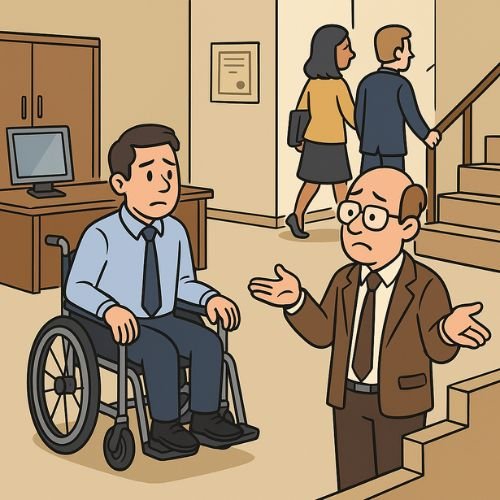
Real-world example of disability discrimination at the workplace
For instance, suppose a highly qualified applicant mentions during a job interview that he uses a wheelchair. Even though the role is an office job he can perform with no issue, the hiring manager privately worries about accommodating the wheelchair and decides not to offer him the position. The applicant later learns the job went to someone less qualified who doesn’t have a disability. This is a clear example of disability discrimination in hiring, the candidate was turned away only because of his disability, not because of his skills or experience. In a workplace scenario, consider an employee who is excellent at her job but develops a medical condition that requires her to take brief breaks for medication. If her employer refuses to allow these breaks or penalizes her for them, that is also disability discrimination because the employer is not making a reasonable accommodation for her health needs.
Religious Discrimination
Religious discrimination means treating a person unfairly because of their religious beliefs, practices, or cultural traditions related to religion. This can happen to people of any faith (or even those who have no religious affiliation). In the workplace, it could involve things like mocking someone’s religious attire or rituals, not considering their dietary restrictions at company events, or refusing to adjust a work schedule to accommodate religious observances when it would be reasonable to do so. It might also appear as workplace policies that unintentionally favor one religion over another (for example, always giving days off for certain holidays but not others). Every employee has the right to follow their beliefs. An employer should make reasonable efforts to accommodate religious practices (such as prayer times or wearing religious clothing) as long as it doesn’t seriously interfere with work. Ignoring or dismissing someone’s needs or traditions related to religion, or pressuring them to conform to another religion or no religion, is discriminatory.
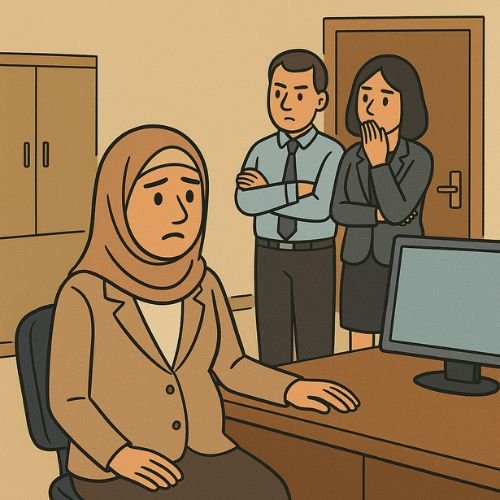
Real-world example of religious discrimination at the workplace
For example, an employee who is Muslim might need a short break in the afternoon to perform daily prayers, which generally take just a few minutes. If his duties allow for a brief pause, this is a reasonable request. But suppose his manager refuses to allow it and begins scheduling important meetings during that prayer time on purpose. The employee is forced to choose between his religious practice and his job, a situation that amounts to religious discrimination. In another case, imagine a company has a dress code that forbids head coverings. A Sikh employee wears a turban as part of his faith, or a Jewish employee wears a yarmulke, or a Muslim woman wears a hijab. If these items do not pose a safety issue or hinder job performance, the company should allow them. If the employer insists the person remove their religious attire or punishes them for wearing it, that is a clear example of unfair treatment based on religion.
Pregnancy Discrimination
Pregnancy discrimination is a form of gender discrimination that occurs when an employee (or job applicant) is treated unfairly because she is pregnant, has given birth, or has a medical condition related to pregnancy. This type of discrimination can happen at different stages: an employer might decide not to hire someone because they know she is pregnant; a pregnant employee might be fired or demoted after revealing her pregnancy; or a new mother might face negative consequences for taking maternity leave. It can also include refusing to provide reasonable accommodations for a pregnant worker, such as needing to sit instead of stand during a long shift, requiring more frequent bathroom breaks, or avoiding heavy lifting on doctor’s advice. Pregnancy is a temporary condition, and it should not change how an employee’s contributions and potential are viewed. Treating someone as less capable or committed just because she is pregnant is unfair and illegal. Employers are expected to treat pregnant employees the same as others in terms of ability to work, and to make minor adjustments if needed to help them continue their job safely.

Example of pregnancy discrimination at work
Consider a scenario where a woman informs her boss that she is expecting a baby. In the weeks following this news, she notices a change at work: she’s left out of important meetings, major clients are reassigned to others, and her manager starts suggesting that maybe she should take an early leave. Eventually, she’s passed over for a promotion that she was in line for, with the explanation that “we need someone who will be here long-term.” This is a classic example of pregnancy discrimination. The employer assumed she wouldn’t be as committed or available because of her pregnancy and upcoming parental responsibilities, and as a result, treated her unfairly by sidelining her career. In another example, a pregnant job applicant might be the top candidate for a role, but once the interviewer notices her pregnancy, they abruptly end the interview and she never hears back. If her pregnancy was the reason she wasn’t hired, that’s also discrimination. In all such cases, the key point is that the only reason for the negative treatment is the pregnancy, not the person’s actual work performance or qualifications.
LGBT Discrimination
LGBT discrimination in the workplace refers to unfair treatment of employees because of their sexual orientation or gender identity. “LGBT” stands for Lesbian, Gay, Bisexual, and Transgender, and it includes anyone who is not heterosexual and/or not cisgender (not identifying with the gender they were assigned at birth). Discrimination against LGBT individuals can take many forms. It might be open hostility, such as anti-gay or anti-transgender insults and harassment. It could also be unequal treatment, like not hiring someone, denying them a promotion, or paying them less because they are gay or transgender. Sometimes, it involves a lack of respect for a person’s identity, for example, refusing to use a transgender employee’s correct name or pronouns, which creates a degrading environment. Just like other forms of discrimination, judging an employee on anything other than their skills and work performance is wrong. In the United States, treating employees unfairly due to sexual orientation or gender identity is a form of illegal sex discrimination, as confirmed by the courts. Every employee, regardless of who they love or how they identify, deserves to feel safe and equal at work.
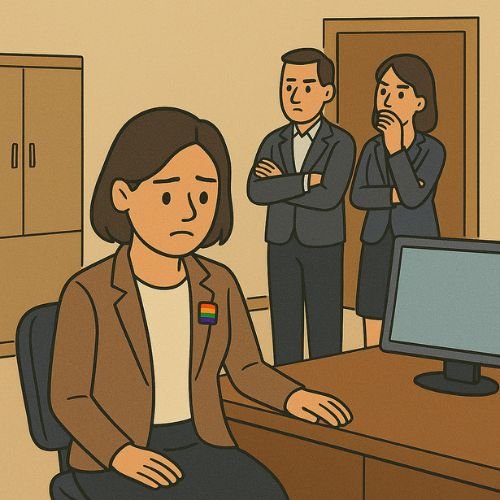
Real-world example of LGBT discrimination at work
For instance, imagine an employee who has been a high performer at a company. This employee happens to be gay and mentions his same-sex partner in conversation at work. Shortly after, he notices that his manager is acting differently towards him, he’s no longer invited to client meetings or important strategy sessions that he used to attend. Eventually, when a new project lead position opens up, he isn’t even considered, even though he’s one of the most qualified. If the only thing that changed before this unfair treatment was the manager learning about his sexual orientation, it strongly suggests that he is facing LGBT discrimination. Another example could involve a transgender woman who comes to work after transitioning (letting her coworkers know she now lives as female). If coworkers or supervisors start refusing to work with her, make hurtful comments, or deliberately misuse her old name, these actions create a hostile workplace for her because of her gender identity. Both examples show how prejudice about sexual orientation or gender identity can result in an employee being mistreated or held back unfairly.
Subtle or Indirect Discrimination
Not all workplace discrimination is immediately obvious. In many cases, bias can be subtle or indirect, making it harder to spot but still very harmful. Subtle discrimination refers to actions or attitudes that unfairly single out or exclude people in quiet ways. There may not be clear slurs or explicit policies against someone, but the discrimination is hidden in everyday behavior or decisions. Often, the person doing it might even deny any bias if confronted, or they might claim it was just a joke or not a big deal. But for the person on the receiving end, the pattern becomes clear over time. These could be things like consistently overlooking someone for no obvious reason, giving backhanded compliments related to their identity, or holding them to different standards than everyone else. Indirect discrimination can also occur through company policies that seem neutral but end up disadvantaging a particular group more than others. It’s important to be aware of these subtle behaviors because they contribute to an unfair work environment, even if they’re not as blatant as other forms.
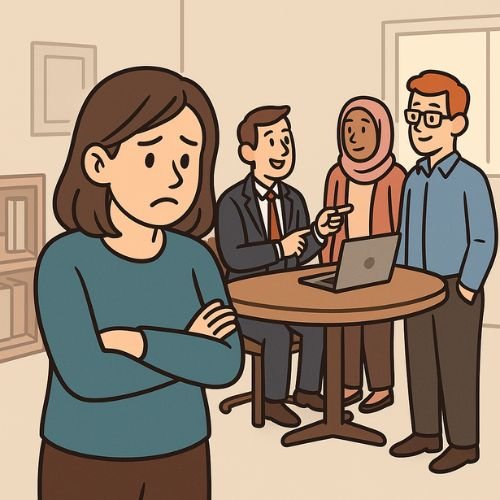
Examples of subtle discrimination at work
- Stereotypical “Jokes” or Comments: Offhand comments or jokes that poke fun at someone’s age, gender, race, or other personal traits. For example, repeatedly joking that an older worker “might not remember that” or saying to a female colleague “You’re pretty strong for a woman”. These remarks might be brushed off as humor, but they are based on stereotypes and make the targeted person feel uncomfortable or belittled.
- Exclusion from Opportunities: Leaving certain people out of meetings, decision-making, or social events because of assumptions about them. For instance, a manager might not invite the only woman on a team to a golf outing with a client, assuming she wouldn’t be interested. Or a team leader might not assign a challenging task to a minority employee, assuming they might not handle the “pressure,” even though that person was never given a chance.
- “Us vs. Them” Mentality: Using language or exhibiting behavior that separates one group from another. An example is a supervisor who frequently praises the work of employees of one background while being overly critical of others, or who makes comments like “People like us do things this way…” implying that those who are different don’t belong or can’t match up. This can create a divide and make those in the minority group feel unwelcome or always under scrutiny.
- Unequal Standards and Micromanagement: When certain employees are constantly micromanaged or held to higher standards just because of who they are. For example, a boss might closely scrutinize the work of an employee with a disability or a younger employee, nitpicking minor mistakes, while more major errors by others are overlooked. Over time, this sends the message that the boss doesn’t trust or respect the employee’s abilities, which is demoralizing and unfair.
- Indirect Policy Bias: Workplace rules or traditions that seem neutral but end up disadvantaging a particular group. For instance, an office might have an unwritten rule that the “real” networking happens at late-night drinks after work. This could indirectly exclude employees who don’t drink alcohol for religious reasons or those with family responsibilities in the evenings. Or a company could require everyone to work on Saturday mornings, which might conflict with the religious practices of some employees. If these policies aren’t essential to the job and no accommodations are offered, they can be a form of indirect discrimination.
These subtle forms of discrimination can be hard to prove or even recognize at first, but they add up. The result is that the affected employees feel less valued or respected, which can harm their morale and career growth. It’s important for both employees and employers to pay attention to these signs and address them. Even if something wasn’t meant to be hurtful, if it consistently affects one group more negatively, it should be reconsidered and changed.
What to Do If You Experience Discrimination at the Workplace
Facing discrimination at work can be stressful, upsetting, and even scary. You might feel embarrassed, or worried about losing your job. It’s important to remember that you have rights and options. Here are some clear steps you can consider if you experience unfair treatment or harassment at work:
- Document the incidents: Keep a written record of every instance of discrimination or harassment. Include dates, times, locations, who was involved, and details of what happened. If there were any witnesses, note their names. Save any related emails, messages, or documents. Having this information will be very helpful later on, as it provides evidence and helps you remember specifics.
- Review your workplace policies: Check your employee handbook or company’s code of conduct to see what it says about discrimination and how to report it. Many companies outline the steps for making a complaint (for example, telling you to report to a supervisor or a Human Resources representative). Knowing the proper procedure will guide you on what to do next and shows that the company already has rules against this behavior.
- Report the issue internally: If you feel safe and comfortable doing so, report the discrimination to someone in authority at your workplace. This could be your direct supervisor or the Human Resources (HR) department. When you report it, stick to the facts and explain what has been happening, providing some of the key details from your documentation. It can help to bring someone you trust with you for support, if that’s allowed. Employers are generally required to take these complaints seriously and investigate them. Speaking up early can sometimes stop the behavior before it gets worse. (Tip: If your immediate supervisor is the person discriminating against you, it may be better to go directly to HR or another manager.)
- Seek support from others: Don’t isolate yourself. Talk about what you’re going through with trusted colleagues, friends, or family members. They can provide emotional support and may offer practical advice. Sometimes, you might discover that others at work have experienced similar treatment, and you can support each other or even approach management together. If your company has an employee assistance program or if you’re part of a union or professional association, those can be good resources too. The key is to remember you’re not alone and you don’t have to endure this in silence.
- Understand your rights and consider external help: If the issue isn’t resolved internally or if the response from your company is not adequate, you have the right to seek help outside of your workplace. In the United States, the Equal Employment Opportunity Commission (EEOC) is a federal agency that handles workplace discrimination complaints. Your state may also have a fair employment agency. You can contact these organizations to file a complaint. They can investigate the situation, mediate between you and your employer, or in some cases, give you a “right to sue” letter that allows you to take legal action. Reaching out to these agencies can often be done online or by phone, and they will guide you through the process.
- Consider legal advice: If the discrimination is severe or has caused you significant harm (like losing your job or affecting your health), or if you’re not sure what to do next, it might be useful to consult an employment lawyer. Many lawyers offer initial consultations, sometimes even for free. An attorney can explain your legal options in plain language and help protect your rights. They can also tell you about any deadlines for taking action (for example, discrimination claims often have to be filed with the EEOC within a certain number of days after the incident). Getting legal advice doesn’t mean you’re definitely going to court—it just helps you make an informed decision about how to proceed.
- Take care of yourself: Experiencing discrimination can take an emotional and physical toll. It’s normal to feel stress, anxiety, or even depression as a result of what’s happening at work. Make sure to prioritize your well-being during this time. This could mean talking to a counselor or therapist, especially if your workplace offers mental health resources. It could also mean engaging in activities outside of work that reduce stress and build your confidence, like exercise, hobbies, or spending time with supportive friends and family. Remember that what is happening is not your fault. Being discriminated against doesn’t mean you did anything wrong or that you’re not good at your job. Sometimes, just reminding yourself of your value and seeking encouragement from others can help you get through a tough situation while you take the steps above to resolve it.
Important: You might worry about retaliation,that is, being punished for reporting discrimination (for example, being fired, demoted, or mistreated further). Retaliation itself is illegal. Employers are not allowed to punish you for speaking up about discrimination or harassment, as long as your complaint is made in good faith. While the fear is understandable, know that the law is on your side here. If you suspect any retaliation, document it and report it as well. This protection is in place so that workers can raise concerns without fear of automatically losing their job or facing new abuses.
By following these steps and getting the right support, many people successfully address discrimination. It can take courage to come forward, but doing so can not only help stop the unfair treatment against you, it can also lead to positive changes in your workplace for others.
A Message to Everyone Facing Discrimination at Work
If you are being treated unfairly at work because of who you are, whether it is your gender, race, age, disability, religion, pregnancy, sexual orientation, or gender identity, know this: you are not alone, and you do not have to accept any kind of discrimination.
Workplace discrimination can feel isolating and deeply personal. It may cause you to question your value and place in the workplace. But the truth is, the issue lies with unfair systems, biased behavior and a culture that needs to change. You have every right to speak up and protect yourself.
You deserve a workplace that respects your abilities, honors your contributions, and values you for who you are. No one should be denied opportunities, excluded from teams, overlooked for promotions, or harassed because of personal characteristics that have nothing to do with job performance.
If something feels wrong, pay attention to that feeling. Speak with someone you trust, write down what is happening, and take steps to report the issue. Reach out to coworkers, managers, or human resources. If the problem continues or is not taken seriously, you can contact organizations or legal experts who are there to help. The law supports your right to fair and equal treatment at work.
Taking action might feel difficult, but it can also lead to change. When you speak up, you are not only helping yourself, you are making it safer and more just for others who may face the same issues in the future.
You are not alone. You deserve respect and fairness. And you have the right to work in an environment where equality is not just an idea but a reality.

